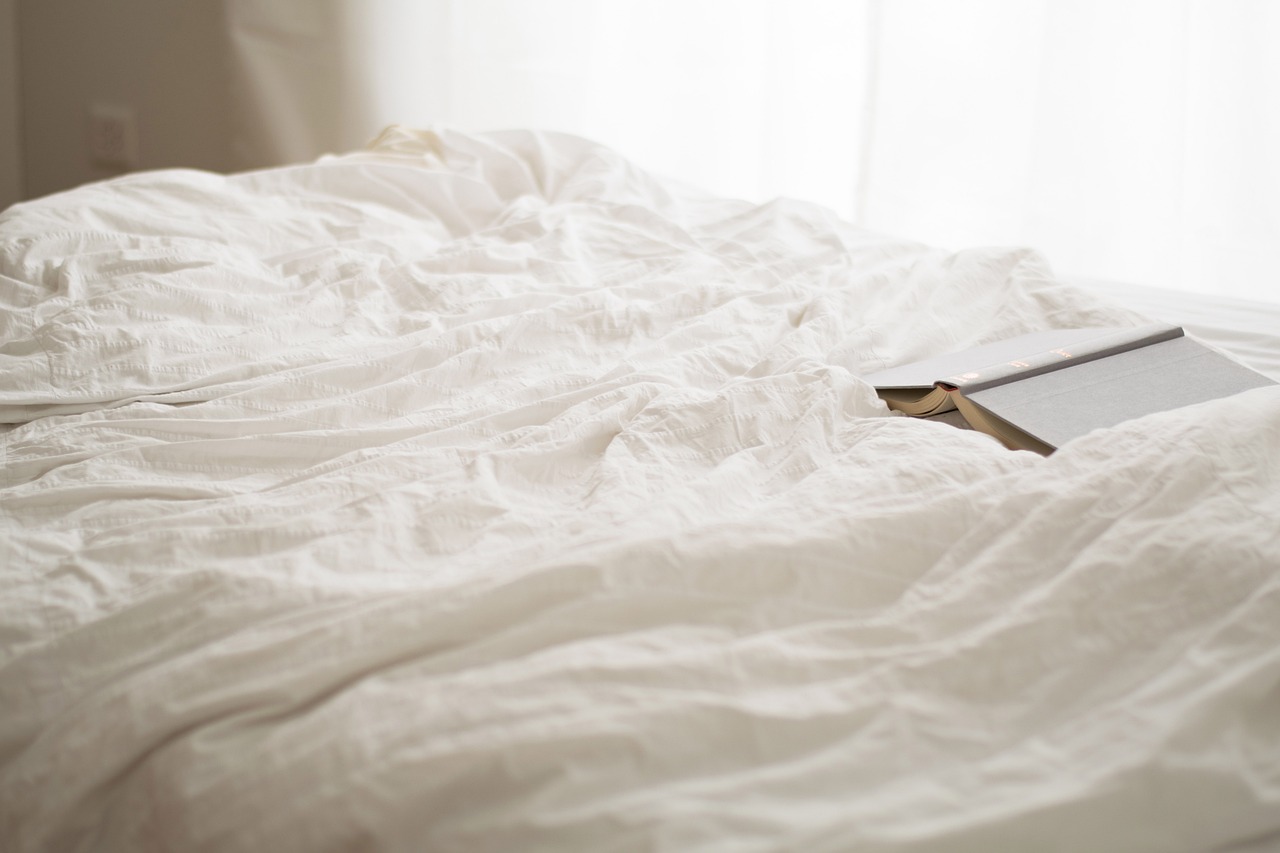Are you experiencing skin rashes and incessant itching that seems to have no explanation? It’s time to delve into the world of bed bugs and understand their role in causing these discomforting symptoms.
Bed bug bites can leave you with red, itchy welts that can be quite distressing. These tiny, blood-sucking pests are experts at hiding in the seams of your mattress, furniture, and even in cracks and crevices. When they bite, they inject an anticoagulant and an anesthetic, which allows them to feed without your knowledge. However, their saliva can trigger an allergic reaction in some individuals, leading to the development of rashes and itching.
In this article, we will explore the symptoms of bed bug bites, effective treatment options, preventive measures to avoid infestations, the importance of professional extermination services, and the need for education and awareness to tackle this growing problem. So, get ready to dive into the fascinating world of these pesky insects and discover how they contribute to your skin woes.
Understanding Bed Bug Bites and Symptoms
If you’re experiencing skin rashes and uncontrollable itching, it’s important to understand the characteristics of bed bug bites and the symptoms they can cause.
Bed bug bites typically appear as small, red, itchy welts on the skin. They are often grouped together in a line or cluster, as bed bugs tend to bite multiple times in a single feeding session. The bites themselves are painless, as bed bugs inject an anesthetic to numb the area before feeding. However, the itching and rashes that follow can be intense and persistent.
It is important to note that not everyone reacts to bed bug bites in the same way. Some individuals may have no visible reaction, while others may experience severe allergic reactions. If you suspect bed bug bites, it is crucial to consult a healthcare professional for proper diagnosis and treatment.
Treatment Options for Bed Bug Bites
When it comes to dealing with those pesky bites from those annoying little critters, there are a few treatment options that can provide some relief.
The first step is to wash the affected area with soap and water to prevent infection. Applying a cold compress can help reduce swelling and itching.
Over-the-counter antihistamines such as diphenhydramine can provide temporary relief from itching. Topical corticosteroid creams or ointments can also help reduce inflammation and itching.
If the itching persists or the bites become infected, it’s important to seek medical attention. In severe cases, oral corticosteroids may be prescribed to reduce inflammation.
It’s crucial to avoid scratching the bites, as this can lead to further irritation and potential infection.
By following these treatment options, you can find some relief from those bothersome bed bug bites.
Preventive Measures to Avoid Bed Bug Infestations
To avoid those annoying critters invading your space, take preventive measures to keep bed bugs at bay. Bed bug infestations can be prevented by practicing good hygiene and maintaining a clean living environment.
Regularly vacuuming and steam cleaning your mattress, bed frame, and surrounding areas can help eliminate any potential hiding spots for bed bugs. Additionally, it’s important to inspect secondhand furniture and clothing before bringing them into your home, as these items can be common sources of bed bug infestations.
Encasing your mattress and box spring in bed bug-proof covers can also provide an extra layer of protection. Furthermore, reducing clutter in your home can minimize potential hiding places for bed bugs.
By implementing these preventive measures, you can significantly reduce the risk of bed bug infestations and protect yourself from their itchy bites.
Professional Bed Bug Extermination Services
If you find yourself dealing with a bed bug infestation that you can’t seem to control on your own, it may be time to call a professional exterminator. These experts have the knowledge and experience to effectively eliminate bed bugs from your home.
Understanding the different treatment methods they use can help you make an informed decision on how to proceed with extermination.
When to Call a Professional Exterminator
Don’t hesitate to reach out to a professional exterminator if you notice persistent skin rashes and itching caused by bed bugs. Bed bug infestations can be difficult to eliminate on your own, as these pests are resilient and can hide in hard-to-reach areas. A professional exterminator has the expertise and specialized tools to effectively eliminate bed bugs from your home.
When determining the need for a professional exterminator, consider the severity and persistence of the infestation. If you’ve tried DIY methods without success, it’s time to seek professional help. Additionally, if you have a large infestation or live in a multi-unit building, professional extermination is crucial to prevent the spread of bed bugs to neighboring units.
Professional exterminators use a combination of methods, including inspection, chemical treatments, and heat treatments, to eradicate bed bugs. They’ll also provide recommendations for preventing future infestations.
Remember, it’s important to address bed bug infestations promptly to minimize the risk of skin rashes and itching. Contact a professional exterminator today to regain control of your home and find relief from the discomfort caused by bed bugs.
Understanding Different Treatment Methods
Understanding the various methods of treatment is essential for effectively eradicating bed bug infestations and preventing future outbreaks. When it comes to tackling these persistent pests, there are several treatment options available.
The first method is heat treatment, where professionals use specialized equipment to raise the temperature in infested areas to a level that’s lethal to bed bugs.
Another approach is insecticide treatment, which involves applying chemical agents to targeted areas to kill bed bugs and their eggs.
Additionally, steam treatment can be used, where high-temperature steam is applied to surfaces to eliminate bed bugs.

It’s important to note that a combination of these methods is often necessary for optimal results.
To determine the most appropriate treatment plan, it’s recommended to consult with a professional exterminator who has experience in dealing with bed bug infestations.
Education and Spreading Awareness
To effectively prevent bed bug infestations, it’s crucial to inform others about the necessary precautions. By educating people about proper hygiene practices, the risk of bed bug transmission can be significantly reduced.
Additionally, dispelling common myths and misconceptions surrounding bed bugs is essential. This is important in order to promote accurate information and prevent unnecessary panic.
Informing Others about Bed Bug Prevention
Knowing the simple steps to prevent bed bug infestations can save you from sleepless nights and itchy skin.
Bed bugs are small, parasitic insects that feed on the blood of humans and animals. They are commonly found in beds, furniture, and cracks and crevices in walls.
To prevent these pests from infesting your home, it’s crucial to regularly inspect and clean your living spaces. Vacuuming thoroughly and frequently can help remove any potential hiding spots for bed bugs.
Additionally, it’s important to wash and dry your bedding, clothing, and curtains at high temperatures to kill any bed bugs or eggs that may be present.
When traveling, inspect your accommodations for signs of bed bugs and keep your luggage elevated off the floor.
By following these preventive measures, you can minimize the risk of bed bug infestations and protect yourself from the discomfort and annoyance they cause.
Dispelling Bed Bug Myths and Misconceptions
Now that you’ve learned about informing others about bed bug prevention, it’s time to dispel some common myths and misconceptions surrounding these pesky creatures.
Contrary to popular belief, bed bugs aren’t attracted to dirty or unsanitary environments. They can infest any place, regardless of cleanliness.
Additionally, bed bugs aren’t just found in beds; they can hide in furniture, cracks, and crevices, making it difficult to eliminate them completely.
It’s important to understand that bed bug bites aren’t always immediately visible, and not everyone reacts to their bites. However, if you do experience skin rashes and itching, it’s crucial to seek professional help for proper identification and treatment.
Remember, the key to preventing bed bug infestations is early detection, regular inspections, and proper hygiene practices. Stay informed and take necessary precautions to protect yourself and your surroundings.
Frequently Asked Questions
How long does it take for bed bug bites to appear on the skin after being bitten?
Bed bug bites typically appear on your skin within 1 to 4 days after being bitten. These small, red, itchy welts are caused by the bug’s saliva, which contains an anesthetic and anticoagulant.
Can bed bugs transmit diseases to humans through their bites?
Bed bugs do not transmit diseases to humans through their bites. While their bites can cause skin rashes and itching, there is no scientific evidence to suggest that they can infect humans with diseases.
Are there any natural remedies or home remedies to relieve itching caused by bed bug bites?
To relieve itching caused by bed bug bites, you can try applying a cold compress or calamine lotion to the affected area. Additionally, taking antihistamines or using hydrocortisone cream may provide relief.
How can I differentiate bed bug bites from bites of other insects, such as mosquitoes or fleas?
To differentiate bed bug bites from those of other insects like mosquitoes or fleas, examine the bite marks closely. Bed bug bites typically appear in clusters or a linear pattern, while mosquito bites are single and flea bites often have a red halo around them.
Can bed bugs infest clothes and other personal belongings, and if so, how can I effectively clean and treat these items to prevent re-infestation?
Bed bugs can infest clothes and personal belongings. To prevent re-infestation, wash infested items in hot water and dry on high heat. Vacuum and steam clean furniture and carpets. Use insecticide sprays on infested areas.
Conclusion
In conclusion, understanding the role of bed bugs in skin rashes and itching is crucial for effective prevention and treatment. By recognizing the symptoms of bed bug bites, individuals can seek appropriate medical assistance and alleviate discomfort.
Implementing preventive measures, such as regular inspection of bedding and furniture, can help avoid bed bug infestations. In cases of severe infestation, professional bed bug extermination services should be considered.
Overall, education and spreading awareness about bed bugs are essential in minimizing their impact on human health and well-being.










